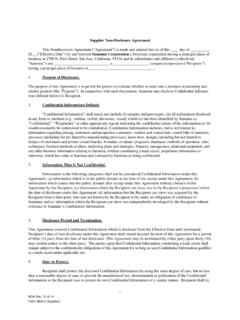Transcription of Preserving signal integrity. PCB FABRICATION Backdrilling ...
1 Preserving signal integrity. PCB FABRICATION Backdrilling and Blind/Buried Via Formation techniques eliminate Backdrilling and Blind/Buried Via Formation via stubs that degrade signal integrity. Backplanes and other thick-format boards can endure significant signal Integrity (SI) disturbances as a result Key advantages include: of the unused portions of through-holes and vias that Reduced deterministic jitter Reduced EMI/EMC radiation from extend past their last connected layer. Known as Lower bit error rate (BER) the stub end stubs, these unused portions result in reflections, Less signal attenuation with Reduced excitation of resonance capacitance, inductance and impedance discontinuities improved impedance matching modes losses that become critical as propagation speeds Minimal design and layout impact Reduced via-to-via crosstalk increase. Increased channel bandwidth Lower costs than sequential Increased data rates laminations A simple and effective method for managing these stubs is Backdrilling .
2 Backdrilling is a Controlled Depth Drilling (CDD) technique that removes stubs with conventional numerically controlled (NC) drill equipment. It can be applied to any type of board where stubs cause SI degradation, with minimal design and layout considerations. Decreasing via stub length by Backdrilling significantly reduces a particularly problematic form of signal distortion called deterministic jitter. Because Bit Error Rate (BER) is strongly dependent on deterministic jitter, any reduction in deterministic jitter by Backdrilling will significantly reduce the overall BER of the interconnect often by many orders of magnitude. Other key advantages to Backdrilling PTH vias include less signal attenuation due to improved impedance matching, increased channel bandwidth, reduced EMI/. EMC radiation from the stub end, reduced excitation of resonance modes and reduced via-to-via crosstalk. A typical through-hole via A backdrilled hole with a controlled depth A second CDD technique for managing stubs is sites in the United States and worldwide, providing the formation of plated blind vias which prevent design for manufacturability (DFM) support for stubs from forming altogether.
3 Blind Via Formation our customers in pre-design and layout phases to is possible at a much lower cost than multiple ensure a smooth integration of these technologies laminated build-up methods and achieves many to the production process. of the same SI benefits. Blind Via Formation is limited by the throw of copper-plating baths to a maximum aspect ratio of 1:1. However, it can be used in conjunction with Backdrilling in thicker board types for more com- plete stub management, or even by itself in thinner board types where a 1:1 aspect ratio is sufficient to eliminate the desired degree and percentage of stubs. This method produces the same improve- ment in SI as Backdrilling where similar lengths of stub are eliminated. As one the world's largest manufacturers of high- technology PCBs, Sanmina-SCI has significant Improved frequency as a result of Backdrilling techniques experience in the design and production of boards using Backdrilling and/or CDD blind vias.
4 We of- fer these capabilities throughout our FABRICATION Controlled Depth Drilling 2700 North First Street San Jose, California 95134. Phone: +1 408 964 3555. About Sanmina-SCI Fax: +1 408 964 3636. Sanmina-SCI Corporation is a leading electronics contract manufacturer serving the fastest-growing segments of the global Electronics Manufacturing Services (EMS) market. Recognized as a technology leader, Sanmina-SCI Europe & Middle East provides end-to-end manufacturing solutions, delivering unsurpassed quality and support to OEMs primarily in the +49 711 7287 220. communications, defense and aerospace, industrial and semiconductor, medical, multimedia, enterprise computing and storage, automotive technology and renewable energy sectors. Sanmina-SCI has facilities strategically located in key Asia Pacific regions throughout the world. More information regarding the company is available at +65 62457300.
5 For more information, please visit our website at or send an email to 2010 Sanmina-SCI Corporation, printed in Sanmina-SCI is a trademark or registered trademark in the and/or other jurisdictions of Sanmina-SCI Corporation. All trademarks and registered trademarks are the property of their respective owners. 0110.









